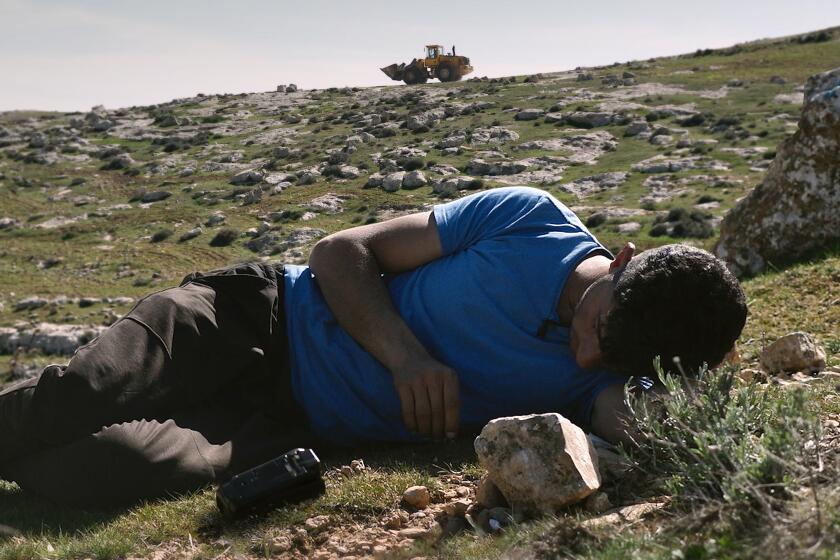‘Crips and Bloods’ shows true colors
- Share via
The image of a glittering downtown Los Angeles skyline turned upside down, which opens Stacy Peralta’s sobering “Crips and Bloods: Made in America,” is both striking and unnerving. With that image, Peralta telegraphs a theme that will resonate in chilling ways throughout his new documentary -- that geography matters and that we are heading into a world that’s been upended.
Just as you settle in for what you hope will be new insights into the much-parsed history of the deadly Crips and Bloods gangs, Peralta’s geographic dissection of their rise through aerial maps detailing their areas of control, he sends us back in time. We head to the cotton fields of the South, through industrialization, the migration North and West of the newly freed slaves, the Watts riots, Malcolm X, the Rev. Martin Luther King Jr., Rodney King -- stories that have been told many times before in documentary and narrative films.
Peralta broke into the field with his surprising, street-level look at the gritty skateboard culture in “Dogtown and Z-Boys,” taking us into a world that was largely unknown at the time. Where an origins story made sense then, it doesn’t work in his favor here. “Crips and Bloods” is often rough around the edges, and since much of the ground it covers has been so well-documented elsewhere, you can’t help but think that if Peralta had not trained his lens so intently on the past, he might have found a fresher story.
The film, shot mostly in 2008, begins with the contemporary scene and seeds in history along the way. Ground zero, where gang wars have raged now for 30 years with a body count that the movie puts at more than 15,000, is largely confined to the central corridor of South Los Angeles, which Peralta maps out into zones of competing red and blue that form a patchwork across the region -- not a simple dividing line down the middle.
Particularly compelling are interviews with former members of the Slausons, the first known gang in this area. Ironically, it was formed by boys rejected from joining what was then a whites-only Boy Scout troop -- just one of the many sad twists of fate that will lead us to today. Not surprisingly, Peralta finds a largely fatherless community with young boys looking to gangs to figure out how to become a “man.”
He spent countless hours with members of the many distinct branches of the Crips and Bloods, with names you might know like the Rolling 20s Bloods, and others you might not, like the Kitchen Crips, and we hear their always tragic stories here. The names might vary street to street, but the images are the same: young men tattooed, muscled, menacing and hardened before they’re 20. More appalling is footage of boys who look to be about 3 or 4, with their serious faces throwing gang signs at passing cars. As the narrative repeats again and again, it is what they know.
Nevertheless, “Crips and Bloods” stands as a compelling reminder that the disintegration of the black family is at the heart of the problem. One after another, gang members describe growing up with nonexistent fathers, and mothers either strung out on drugs or overwhelmed by work.
Coming at a time when gang violence is down and the grip of the Bloods and Crips shows signs of loosening, it is fitting that the film closes with the voices of those involved in efforts to break the cycle for the next generation.
--
--
‘Crips and Bloods: Made in America’
MPAA rating: Unrated
Running time: 1 hour, 33 minutes
Playing: In limited release; in Los Angeles at Laemmle Sunset 5
More to Read
Only good movies
Get the Indie Focus newsletter, Mark Olsen's weekly guide to the world of cinema.
You may occasionally receive promotional content from the Los Angeles Times.











